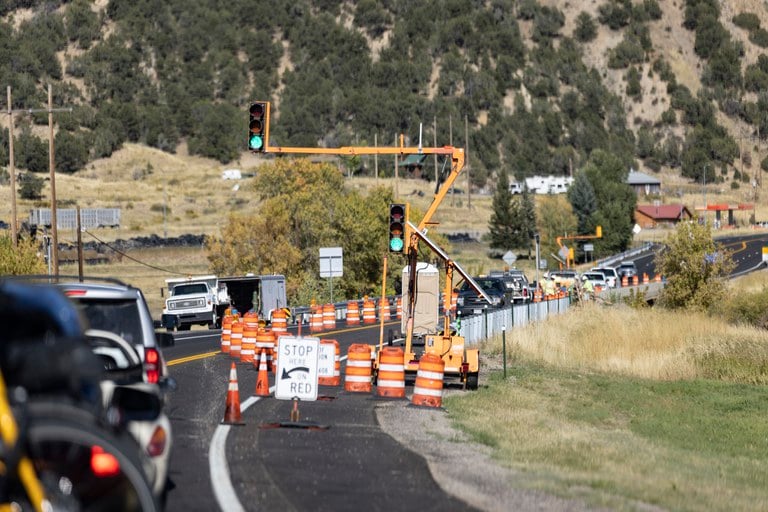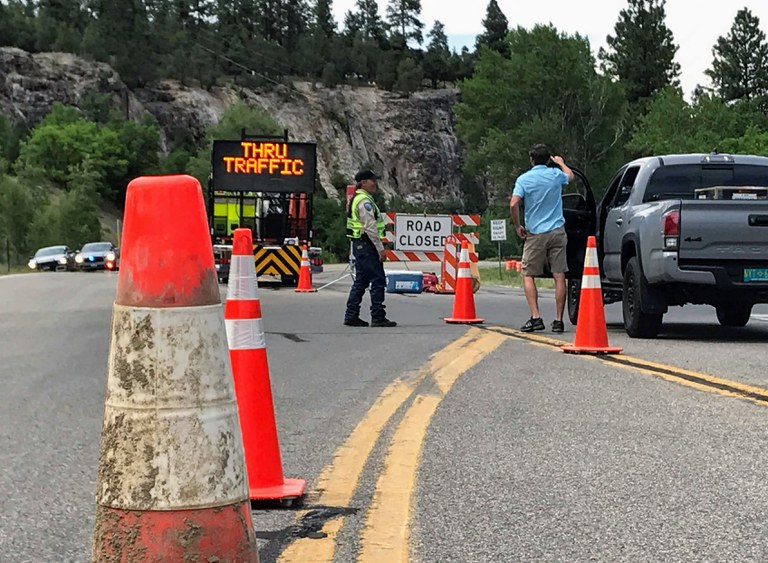Colorado Traffic Control: Now You See Us
Shining a light on the foundation of all road operations

The flow of traffic never stops.
Under the veil of night or the beaming western sun, along the mountain corridor of I-70 or the straight-line stretch of northern I-25, CDOT's Division of Maintenance and Operations keeps Coloradans moving safely throughout the centennial state. Managing this complex and dynamic transportation system requires a comprehensive strategy to ensure smooth and safe travel. At CDOT, a robust and efficient traffic control program serves as the backbone for our numerous and varied road work.
Traffic control is designed to turn the unpredictable conditions on our highways and roadways into safe, manageable zones where our teams can execute essential maintenance. Each year, thousands of maintenance projects and lane closures require the supervision of our traffic controllers. Travelers may not realize the level of thought that goes into traffic control, but with lives on the line, standards are meticulously enforced to keep operations organized and efficient.
The work starts before you see us.
Drivers may think that traffic control begins when cones first hit the pavement. In reality, the process takes weeks of planning and months of training by our expert staff. Before the rubber hits the road, our Traffic Control Supervisors carefully design detour routes and safety buffers in compliance with strict federal and state safety requirements. With a plan in place, teams lay down cones, place signage and switch on floodlights to create a seamless alternate route for motorists and a safe work area for crew members.
Advance warning systems provide drivers with plenty of time to prepare for the changing traffic flows. Sometimes, lowered speed limits are enforced to help drivers navigate these temporary traffic patterns and to help keep roadside workers safe.

The training is rigorous.
With maintaining the safe and efficient flow of traffic as our primary goal, knowledge of the traffic control basics is a requirement for all CDOT maintainers. In-house classes for the Traffic Control Training Endorsement are available to all employees, regardless of their career path. In total, 1,600 CDOT maintainers must renew their endorsement every three years.
For a CDOT employee to manage traffic control operations, they must receive a Traffic Control Certification. To receive the tiered accreditations required to become a lead worker or traffic control supervisor, CDOT provides employees with ample support and education. In addition to the classroom, certification requires between 2,000 and 4,000 hours of practice in the field.
Showtime is all of the time.
In the Denver metro area, shutting down a lane during peak travel hours could lead to a gridlock. Coloradans are on the move at all hours of the day, so to minimize traffic delays, work often takes place after the sun sets.
Without light, driver reaction times are reduced, and driver fatigue is more common at night. Traffic control operators prepare for the added danger by illuminating the zone with portable floodlight towers, reflective channelizers and advance warning signage. A truck-mounted attenuator, or a Scorpion, is placed on the back of a vehicle between the traffic and the work area to act as a cushion and absorb the impact of a potential collision.
The danger is real.
CDOT workers conducting roadside maintenance operations place themselves in harm’s way every day. Maintainers put their lives on the line to maintain the safety and improve travel for all roadway users. Crew members have friends and loved ones they want to safely go home to, too.
From the public, our roadside workers ask for respect to work and live. By following the laws and limits within work zones and around traffic control operations, you can help ensure that we can keep Colorado’s roads safe and efficient for everyone. Let’s work together to keep work zones safe for motorists and crew members — we are doing more than you think.
About the Author

